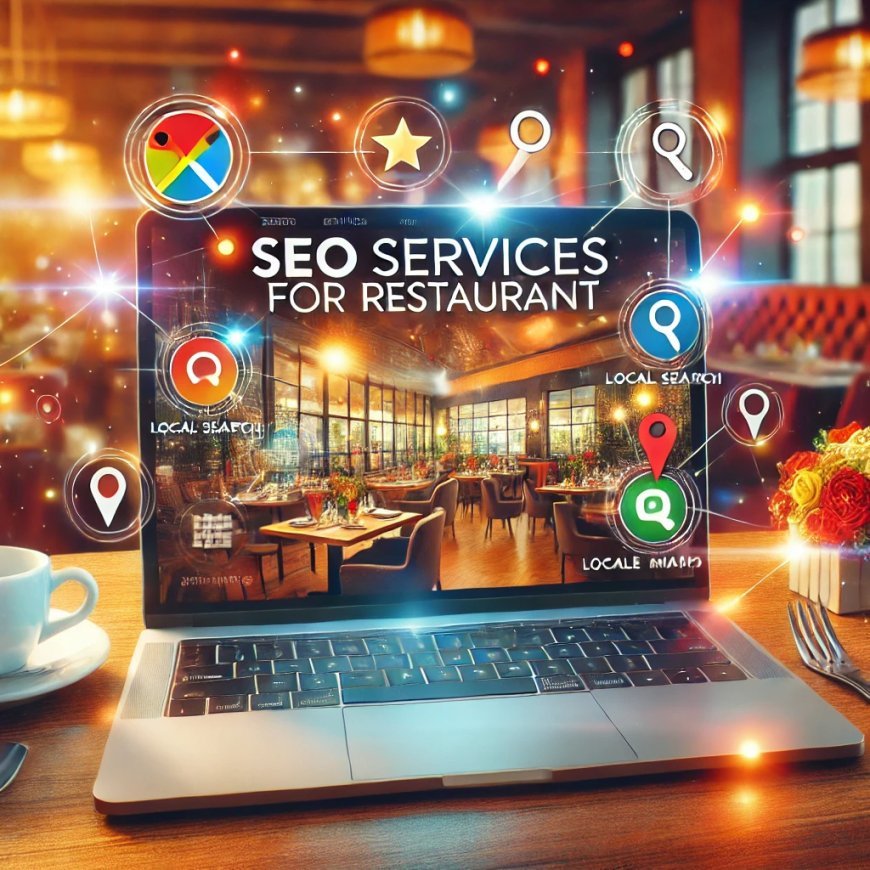How to Get Your Culinary Spot Noticed in a Crowded Online Market

The restaurant business is more competitive than it has ever been in this day and age of digital technology. Because there are so many restaurants competing for customers' attention on the internet, it is no longer sufficient to simply serve mouthwatering food and hope that customers will find you. In a competitive online market, it is necessary to have a strategic combination of digital marketing expertise, local outreach, and a strong brand presence in order to attract customers' attention to your culinary establishment.
This comprehensive guide on SEO services for restaurants is here to assist you in achieving your goal of standing out from the crowd and attracting a greater number of hungry diners.
1. Build a Strong and User-Friendly Website
Your website is often the first impression potential customers will have of your restaurant. A well-designed website acts as your digital storefront, so it needs to be inviting, easy to navigate, and informative.
-
Mobile-Friendly Design: More than half of all searches happen on mobile devices. Ensure your site looks great and works smoothly on smartphones and tablets.
-
Clear Information: Your menu, opening hours, location, contact details, and reservation options should be easy to find. Consider integrating online ordering or booking systems to streamline customer experience.
-
High-Quality Photos: People eat with their eyes first. Showcase your dishes with professional, mouthwatering photos to entice visitors to try your offerings.
-
Fast Loading Times: Slow websites frustrate visitors and increase bounce rates. Optimize images and minimize unnecessary scripts to keep your site speedy.
2. Optimize for Local Searches
Since most restaurant searches are location-specific (“best pizza near me,” “top brunch spots in [city]”), local online visibility is key.
-
Google Business Profile: Claim and optimize your Google Business Profile (formerly Google My Business). Include up-to-date information, photos, menus, and regularly update your posts and offers.
-
Local Keywords: Use keywords that include your city or neighborhood naturally throughout your website content, menus, blog posts, and meta descriptions.
-
Local Listings: Get listed on popular food and local business directories such as Yelp, TripAdvisor, Zomato, and FourSquare. Ensure consistency in your name, address, and phone number (NAP) across all platforms.
-
Customer Reviews: Encourage happy customers to leave reviews on Google, Yelp, and social media. Respond politely and professionally to all reviews, showing you value feedback.
3. Engage Actively on Social Media Platforms
Social media is a powerful tool for restaurants to build community, showcase personality, and engage directly with customers.
-
Choose the Right Platforms: Focus on where your target audience spends time. Instagram and Facebook are great for food businesses due to their visual nature. TikTok can work well if you’re targeting a younger crowd.
-
Post Regularly: Share a mix of content including behind-the-scenes shots, daily specials, chef stories, customer testimonials, and seasonal promotions.
-
Use Stories and Reels: Short video content can highlight your dishes, events, and team in a dynamic and relatable way.
-
Hashtags & Geotags: Use relevant hashtags and location tags to increase your reach in local searches.
-
Engage: Reply to comments, messages, and mentions to build rapport with your audience.
4. Leverage Content Marketing to Tell Your Story
Consumers love stories—about the food, the chefs, the ingredients, and the community. Content marketing allows you to share these stories while improving your online visibility.
-
Start a Blog: Write about your restaurant’s journey, highlight unique ingredients, share recipes, or talk about food trends. This attracts search traffic and establishes your expertise.
-
Email Newsletters: Collect emails from customers to send regular updates, exclusive deals, and personalized invitations.
-
Video Content: Create videos that showcase how dishes are made, share cooking tips, or give virtual tours of your kitchen.
5. Collaborate with Local Influencers and Food Bloggers
Influencer marketing is no longer just for big brands. Local food bloggers and influencers can help amplify your reach.
-
Find the Right Partners: Look for influencers who align with your brand and have an engaged local following.
-
Offer Tastings or Events: Invite them for exclusive tastings or events to generate authentic content and word-of-mouth buzz.
-
Share User-Generated Content: Repost content created by influencers and customers to build social proof.
6. Run Targeted Online Advertising Campaigns
Paid ads can boost visibility quickly and are highly customizable.
-
Google Ads: Use local search ads targeting keywords like “best [cuisine] near me.”
-
Social Media Ads: Platforms like Facebook and Instagram allow you to target audiences by location, age, interests, and behavior.
-
Retargeting Ads: Reach users who have visited your website or social profiles but haven’t yet made a reservation or order.
7. Offer Promotions and Loyalty Programs
Everyone loves a good deal, but promotions also encourage repeat visits and customer loyalty.
-
Exclusive Online Offers: Run limited-time discounts or bundles advertised through your website and social media.
-
Loyalty Programs: Reward frequent diners with points, freebies, or special events. Use digital tools that track and communicate rewards easily.
8. Harness the Power of Online Ordering and Delivery
Especially post-pandemic, many diners expect the convenience of online ordering and delivery.
-
Integrate Seamlessly: If you offer delivery, integrate your ordering system with your website and social channels.
-
Partner with Delivery Apps: List your restaurant on popular apps like UberEats, DoorDash, or Grubhub to expand your reach.
-
Promote Takeout and Pickup: Make these options visible on your website and social media, with easy-to-follow instructions.
9. Monitor Your Online Reputation and Analytics
Continuous improvement depends on listening and adapting based on data and feedback.
-
Track Website Analytics: Use tools like Google Analytics to see how visitors find your site, which pages perform best, and where you lose potential customers.
-
Monitor Social Insights: Each platform offers analytics on engagement and reach—use these to refine your content strategy.
-
Respond to Feedback: Address complaints quickly and publicly to show you care about customer experience. Positive responses can even turn critics into advocates.
10. Stay Authentic and Consistent
Finally, no amount of online marketing can replace authenticity.
-
Reflect Your Brand’s Personality: Whether you’re a cozy neighborhood diner or a chic fine-dining spot, let your online presence mirror that vibe.
-
Consistent Visuals and Messaging: Use consistent colors, logos, fonts, and tone of voice across all channels. This builds trust and brand recognition.
-
Deliver on Promises: Online hype must match the real-life experience. Ensure your food quality, service, and ambiance meet or exceed expectations.
Conclusion
In a crowded online market, standing out as a culinary destination requires more than just great food—it demands a strategic, multi-faceted digital presence. By focusing on a user-friendly website, local search optimization, active social media engagement, content storytelling, influencer partnerships, paid ads, customer loyalty, and reputation management, you’ll build a thriving online presence that attracts and retains diners.
Remember, success won’t happen overnight, but with consistent effort and authenticity, your culinary spot can become the go-to place for food lovers in your area — both online and offline.
What's Your Reaction?



















































